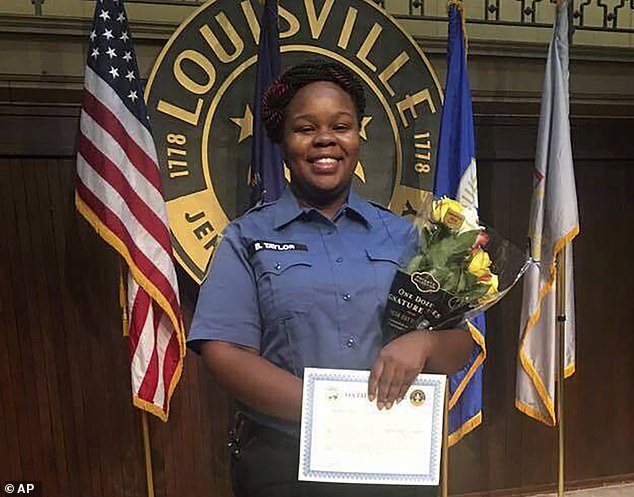A federal jury has returned a guilty verdict in the murder case related to the botched arrest of Breonna Taylor.
As a result, former Louisville police officer Brett Hankison was convicted, after jurors found he used excessive force during the 2020 drug raid that left Taylor dead.
The consensus paved the way for the first conviction in the high-profile case, jailing one of the four officers involved.
All had been accused of violating the civil rights of Taylor, and former Det. Kelly Goodlett pleaded guilty last August to a federal conspiracy charge for falsifying the court order that led to the deadly chain of events.
The death of the 26-year-old Black woman sparked protests across the country, with activists alleging that racial injustice played a role in police actions that day.
A federal jury returned a guilty verdict in the murder case related to the botched arrest of Breonna Taylor, as seen here in this undated photo provided by the Taylor family attorney.
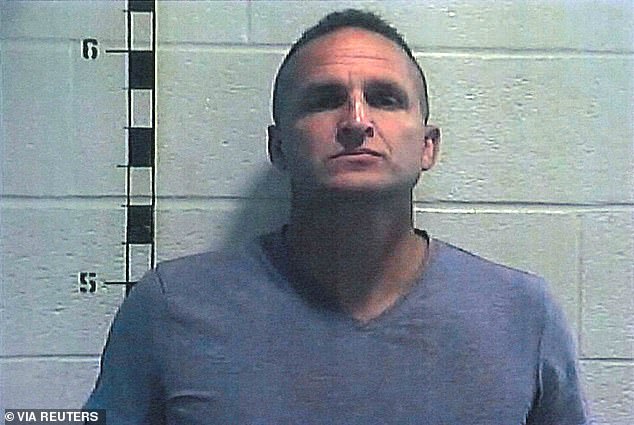
As a result, former Louisville police officer Brett Hankison was convicted, after jurors found he used excessive force during the 2020 drug raid that left Taylor dead.
“While it cannot return Breonna to her family, it represents a crucial step in the pursuit of justice and a reminder that no one should be above the law,” wrote Bernice King, the daughter of Martin Luther King Jr., on a social network. Post Friday night.
The civil rights leader called the verdict “a long-awaited moment of reckoning,” while Taylor’s mother, Tamika Palmer, was seen hugging a friend on the courthouse steps after the sentencing.
She said in her own statement about the long case: “It took a long time.” It took a lot of patience. It was difficult.
“The jurors took their time to really understand that Breonna deserved justice,” the woman concluded.
Minutes earlier, several members of the 12-person jury were seen crying as the verdict was read around 9:30 p.m.
They had previously indicated to the judge that they had reached an impasse over the excessive use of force charge.
The same charge had stumped another jury in 2022, which acquitted Hankison, 48, of state wanton endangerment charges months earlier.
As the new jury remained deadlocked Thursday, members sent correspondence to the judge asking if they needed to know if Taylor was alive when Hankison shot up Taylor’s Kentucky apartment.
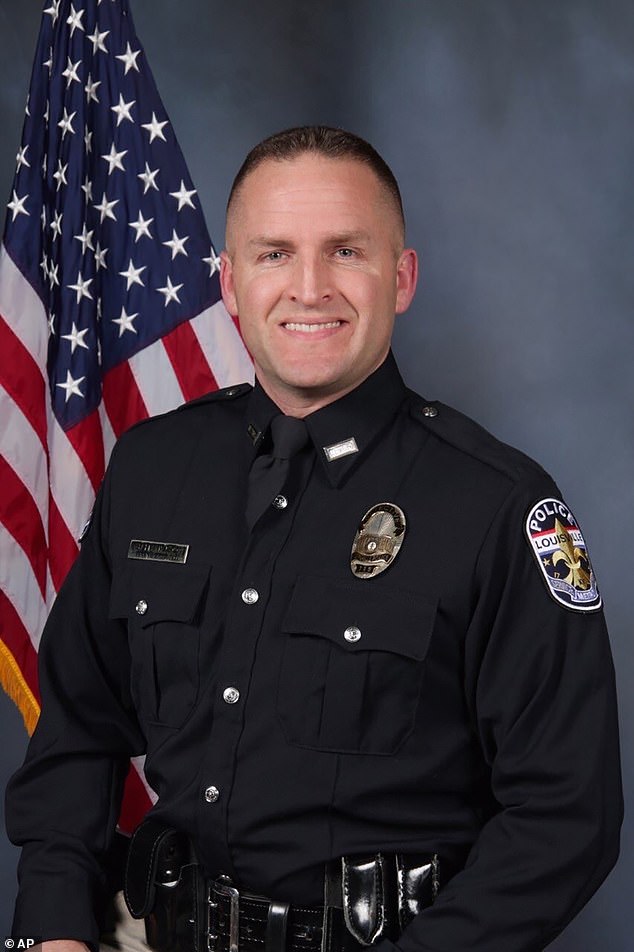
Hankison had argued that he was shooting to protect his fellow officers from Taylor’s boyfriend, Kenneth Walker, who shot him and other officers as they broke down the woman’s door.
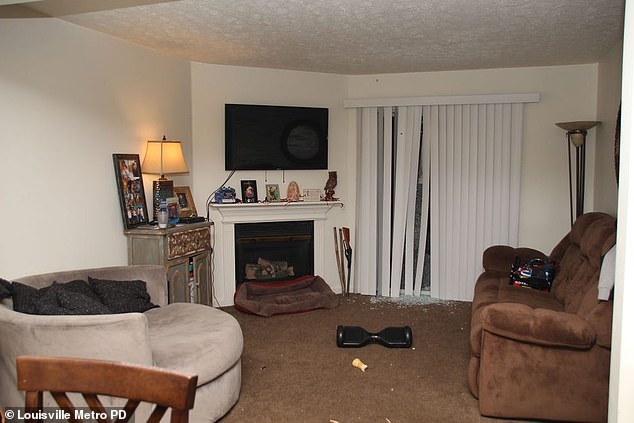
As the new jury remained deadlocked Thursday, members sent correspondence to the judge asking if they needed to know if Taylor was alive when Hankison shot up Taylor’s Kentucky apartment, seen here after the raid.
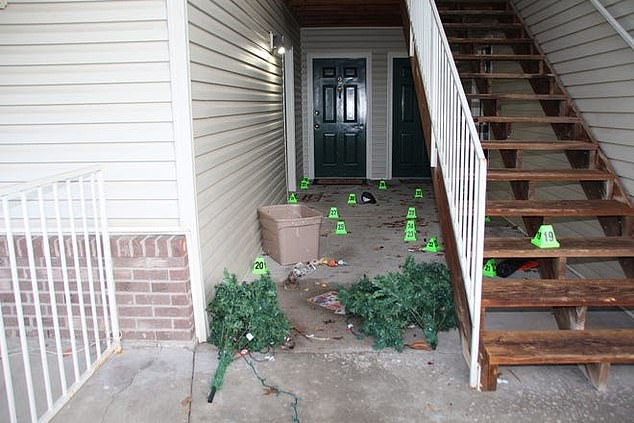
Jurors told the judge they had deadlocked on the excessive force charge. The 2020 crime scene is seen here
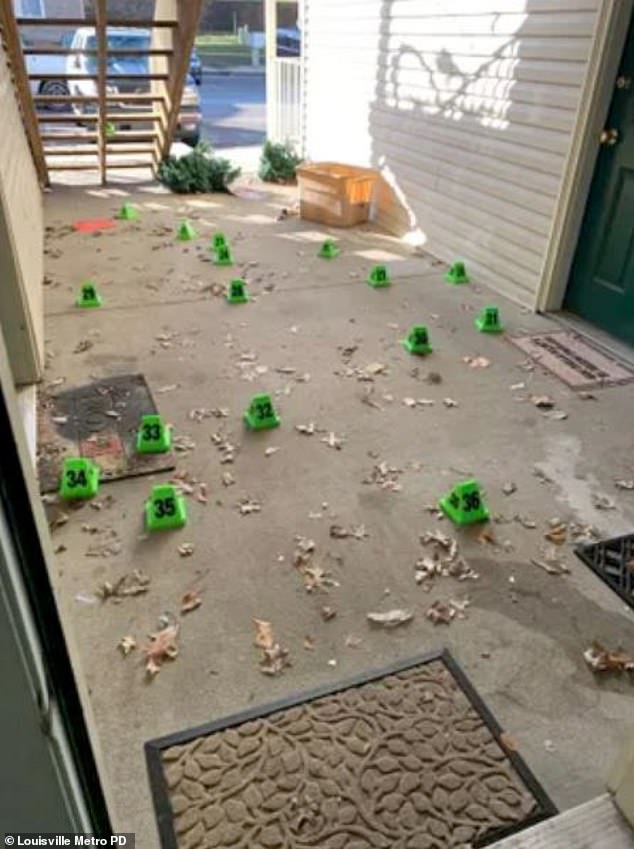
The same charge had stumped a separate jury in 2022, which acquitted Hankison, 48, of state wanton endangerment charges months earlier.
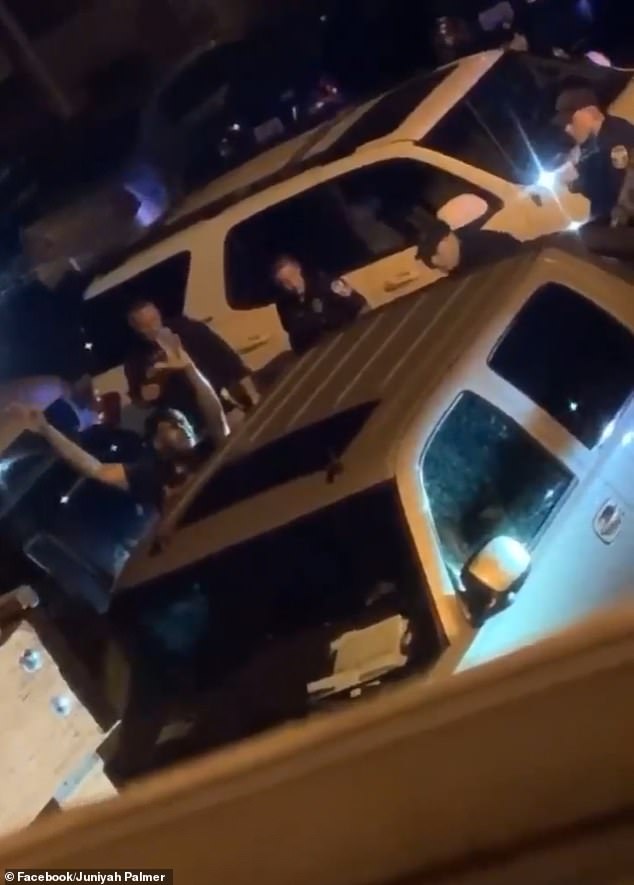
Hankison’s attorney, Don Malarcik, told jurors it was up to prosecutors to “prove beyond a reasonable doubt that Ms. Taylor was alive” when Hankison fired the shot, creating a point of contention among jurors. .
Hankison had argued that he was shooting to protect his fellow officers from Taylor’s boyfriend, Kenneth Walker, who shot him and other officers as they broke down the woman’s door.
Her attorney, Don Malarcik, told jurors that it was up to prosecutors to “prove beyond a reasonable doubt that Ms. Taylor was alive” when Hankison shot her, creating a point of contention among jurors.
Following the investigation, U.S. District Judge Rebecca Grady Jennings urged them to continue deliberating, giving them a chance to air the long-awaited decision on Friday.
The jury, made up of six men and six women, deliberated for several hours before reemerging Friday to give its decision.
Shortly before, Malarcik spoke at length about the role of Taylor’s boyfriend, who fired a shot that hit the former sergeant. John Mattingly at the door. Mattingly retired the following year. He was not charged in the case.
Hankison, meanwhile, testified that when Walker fired, he walked away, walked around the corner of the apartment and shot at Taylor’s glass door and window.
Other officers at the door also returned fire from Walker, striking and killing Taylor, who was in a hallway.
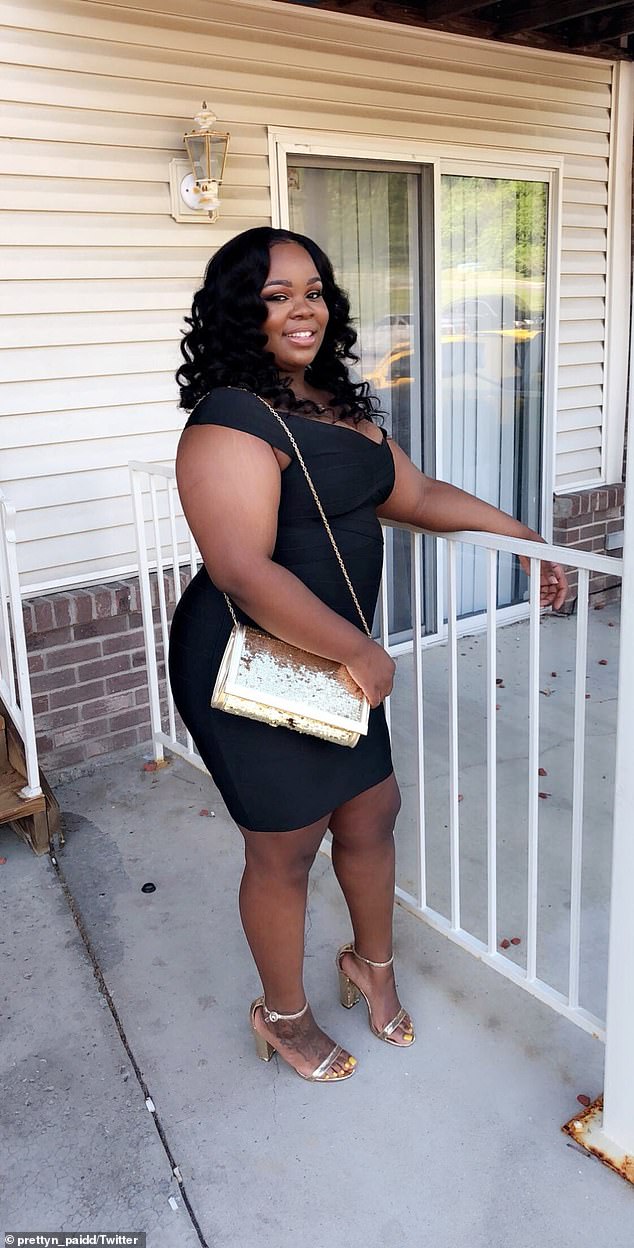
U.S. District Judge Rebecca Grady Jennings urged jurors to continue deliberating, allowing them to reach the long-awaited decision Friday.
Hankison’s lawyers used this during closing statements to argue that their client was acting correctly: “in a very tense and very chaotic environment,” they said, lasting about 12 seconds.
They stressed that Hankison’s shots did not hit anyone, and that it was bullets fired by other agents that claimed the woman’s life.
The cop-turned-convict also said Walker never tried to reach the door or turn on the lights while police were knocking, but instead chose himself and hid in the dark.
“Brett Hankison came within a foot of being shot by Kenneth Walker,” Malarcik insisted, while prosecutors argued that Hankison had acted recklessly when he fired 10 shots into doors and a window where he couldn’t even see the target.
“(Hankison) violated one of the most fundamental rules of deadly force,” lawyers recruited by the federal government said in their own closing arguments Wednesday.
“If you can’t see the person you’re shooting, you can’t pull the trigger,” they insisted, ultimately convincing the jury to discern that there was no question the officer used excessive force.
Meanwhile, neither of the officers who shot Taylor (Mattingly and former Detective Myles Cosgrove) were charged with the victim’s death.
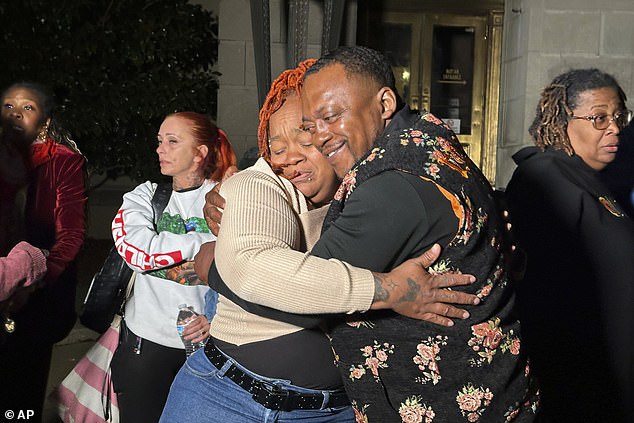
Taylor’s mother, Tamika Palmer, was seen hugging a friend on the courthouse steps shortly after. As for Hankison, his conviction carries a maximum sentence of life in prison. He will be sentenced on March 12 by U.S. District Judge Rebecca Grady Jennings.
Joshua Jaynes and Sgt. Kyle Meany Meany ran a police unit that focused on aggressive drug investigations.
Police served five arrest warrants simultaneously on the night of Taylor’s raid, four of them in a concentrated area where drug activity was suspected and the fifth at Taylor’s apartment nearly 10 miles away.
The warrant for Taylor’s home alleged that she was receiving packages for an alleged drug dealer who was her ex-boyfriend.
The order, signed by Jaynes and approved by Meany, said Jaynes had confirmed with the postal service that packages for the ex-boyfriend, Jamarcus Glover, were going to Taylor’s apartment. Investigators later learned that Jaynes had not confirmed that with the postal inspector.
Jaynes was fired in January 2021 for violating department standards in preparing to execute a search warrant and for being a “liar” on Taylor’s warrant.
Jaynes and Goodlett also allegedly conspired to falsify an investigative document that was written after Taylor’s death, prosecutors said. The feds also allege that Meany, who testified at Hankison’s first trial, lied to the FBI during its investigation.
As for Hankison, his conviction carries a maximum sentence of life in prison. He will be sentenced on March 12 by U.S. District Judge Rebecca Grady Jennings.


